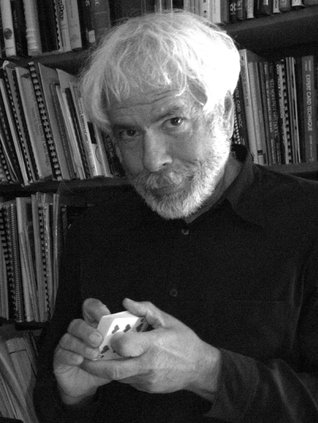
PHOTO BY R. CHERRY
Allan Zola Kronzek wrote “52 Ways to Cheat at Poker.”
Tuesday, Jan. 13, 2009 | 2 a.m.
Sun Archives
Beyond the Sun
It carries the provocative title “52 Ways to Cheat at Poker,” but Allan Zola Kronzek’s latest book actually exists at the strange and often fascinating nexus of the worlds of magic and gambling on cards.
The two topics, disparate to the casual observer, have in fact been linked at least for the past several centuries.
“The card cheats have always been several steps ahead of the magicians in developing technical skills with cards,” said Kronzek, a professional magician who studied under the late sleight-of-hand master Frank Garcia. “The cheats figured out how to do all kinds of things that had applications to magic, and the work was extremely challenging because the good card cheats were very, very good.
“They could control the deck and you could be sitting there and see absolutely nothing. Well, this was of great interest to magicians.”
Since its release, “52 Ways to Cheat at Poker” (Penguin Group, $13) has been well received by the magic community yet largely ignored by poker publications — perhaps, Kronzek suspects, because poker’s de facto cheerleaders have no interest in spotlighting the seedier side of the game.
Indeed, many if not all of the tactics Kronzek details can be characterized as hair-raising.
Consider No. 16, “luminous readers,” which covers various scams based on marked decks and the specially gaffed eyeglasses needed to read the markings. A common cheating technique since the late 1800s, it has been updated with high-tech improvements, according to Kronzek, who points out that the going rate for a particular pair of aviator-style glasses marketed to cheaters is $2,500.
A twist on the scheme requires the cheater to wear contact lenses and special glasses at the same time to detect the marked cards.
“In researching the book I was struck by how old many of the techniques were, and how many of them were updates of techniques you originally saw in the 1870s,” Kronzek said. “But when I saw that one, I thought, ‘Well, that’s a new one.’ ”
Or take the “lay stack” (No. 4), a cheating strategy that’s devastating in its simplicity and extremely difficult to detect. A hustler memorizes a sequence of perhaps six to 10 cards and maneuvers them to the top of the deck before dealing. He might not be able to predict the winner of the hand, but knowing those cards affords him a sizable, and illicit, edge.
“It’s a huge advantage,” Kronzek said. “This is relatively easy to do but a diabolical scheme.”
Even if cheating remains a verboten topic in some quarters, surely it’s better for players to be aware of what poker’s bad guys might be up to than to remain ignorant, Kronzek said.
He does draw a distinction between playing poker in home games or at country clubs, where the action can be down and dirty in more ways than one, and playing in major casinos, where the games are tightly regulated.
“The main reason is scrutiny,” Kronzek said. “If you’re sitting at a table in a Las Vegas casino you are being observed very carefully. Maybe not right at that moment, but there is a record of your play. Casinos take huge precautions against marked cards, crooked dealers and scams like stacking the deck. You certainly don’t have that in home games.”
Casinos are also safe havens from classic “big store” cons such as “papering the neighborhood” (No. 47). Based on a lucrative scam that a well-organized group of cheats pulled off in the Midwest in 1895, “papering the neighborhood” entails stocking a local store’s shelves with marked cards and enticing the target of the sting to go there to buy “new” decks to ensure a clean game.
“That shows the length cheaters will go to, and the cleverness behind some of the scams,” Kronzek said.
Less complicated but nearly as effective are various types of collusion (No. 2), in which cohorts can signal each other with information as basic as the identity of their hole cards. This is one scam that can take place in a casino, said Kronzek, who offers suggestions on how to spot cheats at the poker table and what countermeasures to take against them.
Always cut the cards. Change decks a lot. Use caution. Be vigilant. If you still suspect chicanery, Kronzek advises, “Do the math and get out of the game.”

Join the Discussion:
Check this out for a full explanation of our conversion to the LiveFyre commenting system and instructions on how to sign up for an account.
Full comments policy